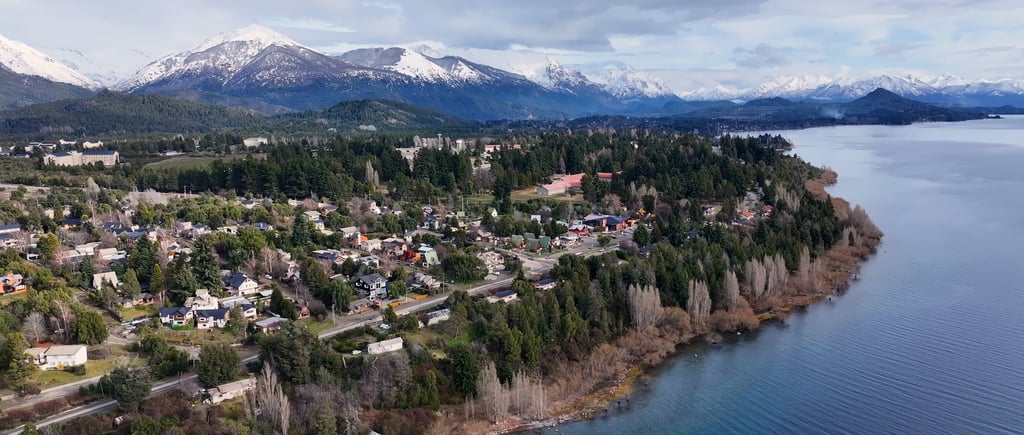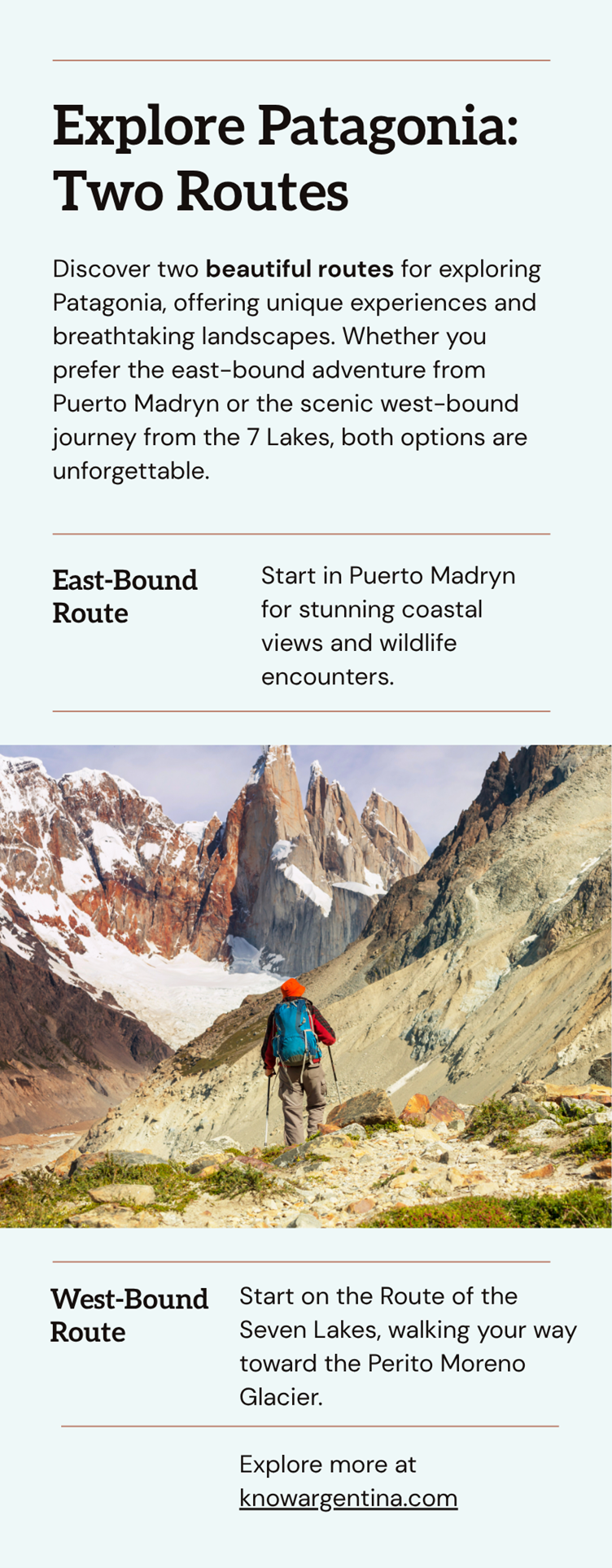A Route Through Southern Argentina: Where the Wind Whispers the Way
Travel through southern Argentina where glaciers groan, plains breathe, and the wind whispers the way—from Bariloche’s lakes to Ushuaia’s edge-of-the-world stillness
TRAVEL GUIDEPLACESPATAGONIA
Gabriela Arellano
6/7/20253 min read


South is not a direction here. It is a sensation. A surrender.
The further you go, the less the world resembles anything you've known. Southern Argentina is not discovered by arrival, but by listening—first to silence, then to something deeper. A kind of awakening. A kind of forgetting.
📍 Two Ways Through Patagonia
This itinerary follows Patagonia’s western spine, tracing the Andes from Bariloche to Ushuaia through lakes, steppes, and glaciers.
If you're drawn to the sea, consider the eastern route, starting in Puerto Madryn, where penguins and whales shape the journey along the Atlantic coast. Two sides of Patagonia, both shaped by wind—but whispering different stories.
🌊 To the End in Ushuaia
No map prepares you for Ushuaia, the last ripple before the great white hush of Antarctica. Here, the road doesn’t end—it disappears.
Sail the Beagle Channel among sea lions and distant glaciers. Hike Tierra del Fuego National Park, where moss muffles every step and the trees bend with stories of wind and time. There’s a lighthouse at the edge of it all—Les Éclaireurs, a sentinel where light meets mist.
Visit the old prison-turned-museum and feel the echo of another kind of exile. Here, even history feels weathered by salt and snow.
Travel Tip: Ushuaia has its own airport and regular flights from Buenos Aires and El Calafate. It’s also a launch point for Antarctic cruises.
When to Go: November to March offers the best weather for hikes and boat trips. Winter (June–Aug) is ideal for snow sports.
Local Flavor: Try king crab (centolla), Fuegian lamb, and Patagonian craft beers.
⚖️ Let the Wind Carry It
This is not a trip you plan. It's one you yield to.
Southern Argentina reshapes you not through adrenaline, but through exposure—to silence, to distance, to the slow erosion of certainty. The wind doesn't push. It suggests. It shows you what remains when everything else falls away.
So come for the landscapes. Stay for the disorientation. Leave, if you can, a little less certain and a little more open.
In southern Argentina, you don’t take the journey.
The journey takes you.
❄️ Glaciers and Sky in El Calafate
Suddenly, blue appears—not in the sky, but in the ice. El Calafate is your base for one of Earth’s most surreal encounters: the Perito Moreno Glacier.
You can approach by boat, walk its creaking surface on a guided ice trek, or simply watch from the walkways as pieces collapse into Lago Argentino with the sound of thunder muffled by awe.
But El Calafate is more than a gateway. Visit the Glaciarium to understand what lies beneath the frozen surface. Taste local lamb, slow-cooked over coals. Watch the light stretch long over the steppe each evening.
Travel Tip: Book glacier tours in advance, especially during high season (Dec–Feb). The town gets busy, but the ice waits patiently.
Where to Stay: Choose a hotel overlooking the lake, like Xelena Hotel & Suites, or opt for an estancia to experience Patagonian ranch life.
🌫️ Begin in Bariloche: Lakes Like Mirrors
Bariloche is cradled in the heart of the Argentine Lake District, and though often known for chocolate and chalets, it is the stillness that stays with you.
Start your journey here—where the reflections on Lago Nahuel Huapi are so precise they feel like alternate worlds. You can rent a kayak or take a boat tour to Isla Victoria, where native forest and silence abound.
Lace up your boots and climb the slopes of Cerro Campanario or Cerro Catedral, not just for the views, but to feel the wind wrap around you like a memory you forgot you had.
In town, taste smoked trout, curanto in Colonia Suiza, or a glass of Malbec by the fire. Here, warmth comes not only from heat, but from the embrace of landscape and people alike.
Travel Tip: Rent a car if you're heading further south. Distances are vast, and public transport becomes sparse the deeper into Patagonia you go.
When to Go: October through March offers milder weather and access to mountain trails.
🌿 Enter Patagonia's Steppe: Empty, and Full
Beyond the forests and lakes, the land changes. Trees give way to vastness. This is the Patagonian steppe—a geography of minimalism, where what remains is essential.
Passing through towns like Esquel or Trevelin, you may stop for artisan beer or a Welsh tea house, remnants of migrations long past. But the real pulse is in the in-between: wind-tangled plains, dusty roads, and that immense, breathing silence.
Drive the Ruta 40, which cuts like a scar through the emptiness. Guanacos peer over fences. Rheas dart across the road. You might not see another car for hours, and that’s the point.
Travel Tip: Stock up on food, water, and fuel. Plan overnight stops in towns like Gobernador Costa or Perito Moreno (town)—not to be confused with the glacier—before heading further south.
Packing Tip: Bring layers. The steppe can be sweltering by day and freezing by night.


Explore more posts in our Travel category
Know Argentina
Discover diverse insights about Argentina's rich culture.
Connect
stay in the loop
info@knowargentina.com
© 2025. All rights reserved.
